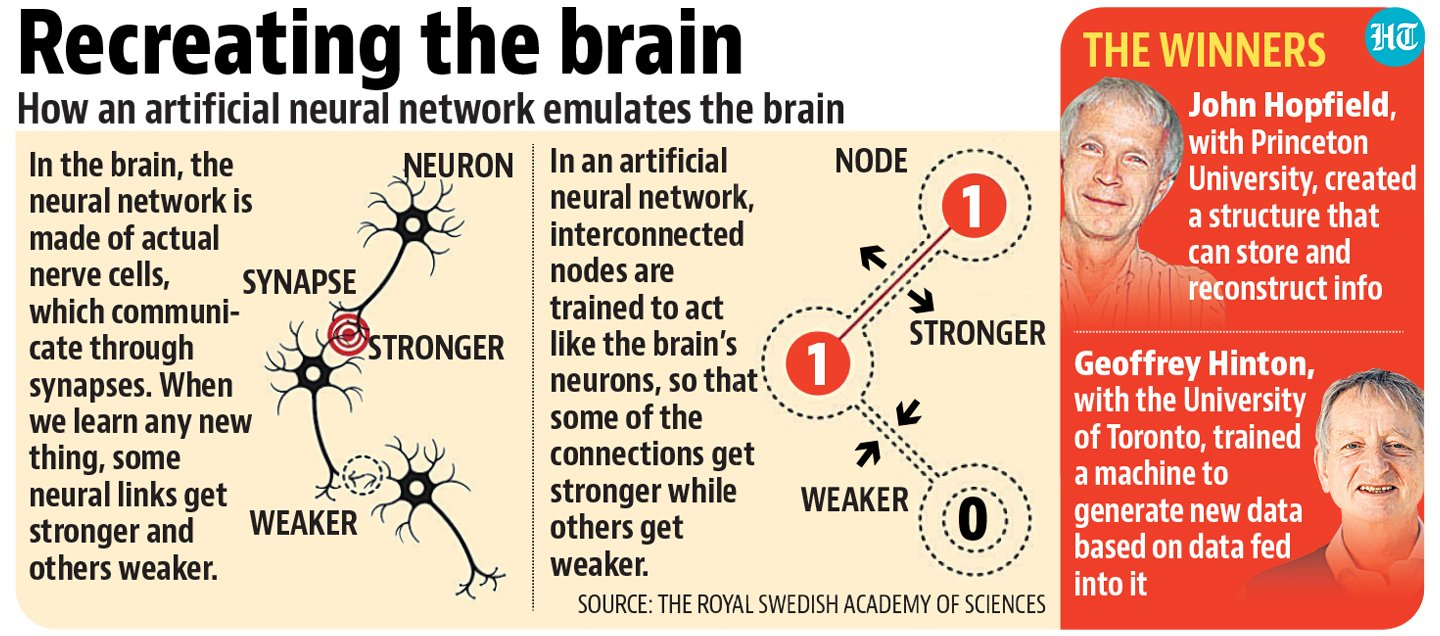2024 Nobel Prize in Physics Awarded for Machine Learning
Why in the news?
John H. Hopfield and Geoffrey E. Hinton won the 2024 Nobel Prize in Physics for their groundbreaking contributions to artificial neural networks, forming the foundation of modern machine learning technology.
Nobel Prize in Physics 2024: Key Winners
- John H. Hopfield created an associative memory system capable of storing and reconstructing images using neural networks.
- Geoffrey E. Hinton developed the Boltzmann machine, enabling machines to recognize patterns and autonomously perform tasks like image recognition.
Scientific Contributions
- Hopfield’s network updates connections between nodes (representing brain neurons) using physics, allowing it to find the most accurate stored image from incomplete data.
- Hinton built upon Hopfield’s work, using statistical physics to create a machine capable of learning characteristic elements from data for classification and pattern creation.
Applications and Impact
- Their work in artificial neural networks has revolutionised machine learning, helping create AI systems used in image recognition and material science.
- Hinton’s innovations have fueled the current rapid growth of machine learning technologies, benefiting various fields such as physics and material development.
About Artificial Neural Networks (ANNs):
- ANNs are machine learning algorithms modelled after the human brain’s neural structure.
- Composed of interconnected artificial neurons (nodes) that process information similarly to biological neurons.
Key Discoveries:
- John Hopfield: Invented the Hopfield Network, designed to store and recall patterns, based on atomic spin physics.
- Geoffrey Hinton: Developed the Boltzmann Machine, a network capable of identifying elements in data and creating new patterns using statistical physics.
Role of ANNs in AI:
- Deep Learning: ANNs form the foundation of deep learning, handling large datasets and complex models.
- Applications in AI: Used in image recognition, natural language processing, and autonomous systems for decision-making.
- Learning from Data: For instance, ANNs can detect tumours by learning from thousands of medical images.
Sources Referred:
PIB, The Hindu, Indian Express,Hindustan Times




